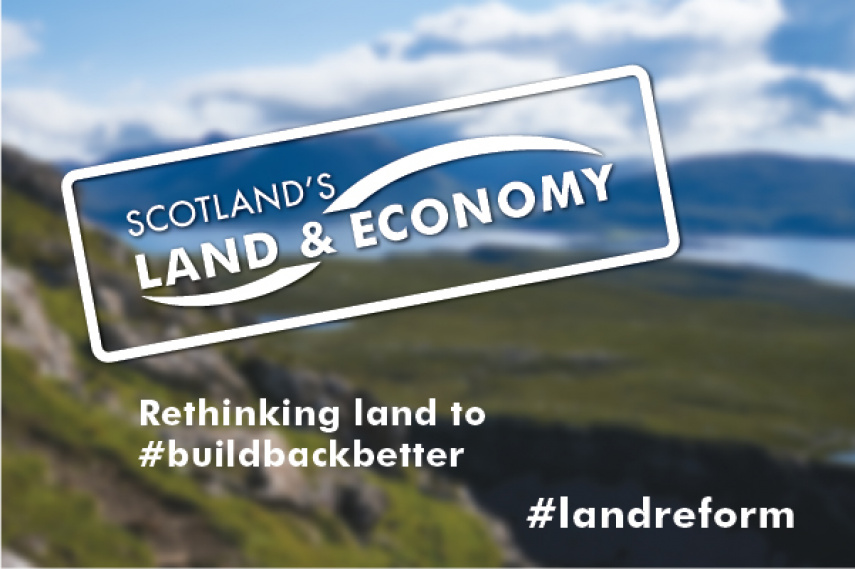
Rental value of land
Andrew Purves

As part of the ‘Scotland’s Land & Economy’ series exploring the fundamental role of land in achieving Scotland’s post-pandemic recovery and renewal, we are publishing a range of guest blogs from leading thinkers across the UK. The purpose of these blogs is to stimulate ideas and debate and do not necessarily represent the view of the Commission.
Building on the recent blog ‘Putting land back into the economic model’ Andrew Purves, founding Director of furniture retailer Purves & Purves, with a Masters in Spatial Planning and now studying for a PhD in public revenue from land rents at UCL, looks at the potential role of land rents in responding to the property implications of the Covid-19 crisis.
A mighty game of chicken is about to take place up and down our High Streets, in Business Parks and Offices throughout the UK, between landlords and tenants.
With many companies being forced to close due to Covid-19 restrictions, without the option to make sales online, three or four months with little or no income will mean very few are in a position to make their next rent payment, let alone meet future rent payments. It has been estimated that over 50% of the rent due since March has not been paid.
But who will really want to force tenants out, and who will replace the evicted companies? But for how long will owners exercise forbearance? Many companies, despite a short-term Bounce Back Loan Scheme or Coronavirus Business Interruption Loan guaranteed by the government, will never recover the lost cashflow.
For the landlords, non-payment of rent will cause their own nightmare – especially those who are heavily in debt – values in many sectors have fallen; there is talk of many operators reducing their occupancy of actual buildings; it has been found that many people are more productive working from home. Warehousing and distribution centres are the exception. Not only are there structural changes in the market, but there is growing doubt over how many people will want to venture out to crowded public spaces. Tenants are calling on landlords to agree to reduced rents based on turnover or threatening to enter company voluntary arrangements to escape non-profitable leases.
Governments around the world have acted fast to support businesses, and the Chancellor promised to ‘do whatever it takes’ to support them. The Bank of England has begun a new wave of quantitative easing, buying back previously issued government debt – but why not turn their attention to a more secure asset? According to government statistics, land value comprised 51% of the UK’s net wealth in 2016. Land, or location value is often greater than the building value, particularly in urban areas.
The Bank could offer to buy the land from landlords, leaving them with a long lease to operate or develop buildings on the land, in return for an annual payment on the rental value of the land.
The scheme would be entirely optional, and the Bank would give a 12 month rent holiday, which the erstwhile landlords would pass on to their tenants, giving all parties time to recover.
Landlords would continue to charge rent to their tenants, but the next payment would be due after 12 months – or annually in arrears – rather than quarterly in advance. In the meantime, valuations could be made to separate land value from building value, and the Scottish Assessors, would be required to maintain this register with new assessments of value every two years. Local authorities could collect this land rent, from the landlords, in the same way that they collect business rates from the tenants. During the rent holiday, tenants would pay any rent arrears.
The Bank, for their part, having created new money to purchase the land, would retain on their balance sheet the land value as an asset. If the scheme is a success, the government might, in due course be able to reduce other taxes on income or consumption, to promote productivity and economic growth.
Owner occupiers could be given the same opportunity to sell their land to the Bank and receive an interest free injection of capital into their business. They too would become leaseholders and begin paying an annual land rent to their local authorities. The scheme could be reversed anytime – with the leaseholder required to buy back their land from the Bank at a value to be assessed at the time of the payment.
In summary, the scheme would provide a cash injection to landlords and owner occupiers, tenants would enjoy a twelve month rent holiday, and a new source of public revenue would be created, in accord with the logic of a land value tax.
A final question to ponder – what would happen if the Scottish Government wanted to pursue this scheme, but the Bank of England did not? Where would the money come from? Would this give more urgency to the recommendation of the recent report for the Scottish Government "Towards a robust, resilient wellbeing economy for Scotland" for a Fiscal Review, and independent borrowing power for Scotland? Or even an independent central bank for Scotland?